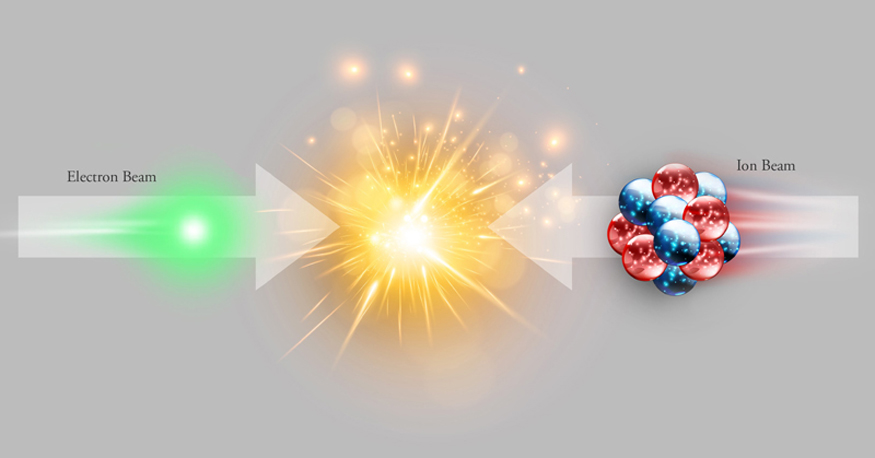The Electron-Ion Collider (EIC) will use electrons to image the quarks and gluons inside nuclei with unprecedented precision,
which will address three profound questions:

Following endorsement by the National Academy of Sciences, DOE officially started the EIC project in 2020.
In this context, we created the California EIC consortium, which consists of 5 campuses from the UC and CSU, and 3 national laboratories. Our goal is to take on major roles in instrumenting the EIC and develop science goals for the EIC. By banding together, we can surpass the roles and visibility of individual campus groups. Given that the national laboratories offer superb infrastructure and expertise, we plan on bringing students, postdocs, and faculty to the laboratories for design, testing, and assembly of EIC detectors.
Consortium institutions have built some of the most advanced silicon detectors in the STAR, PHENIX, sPHENIX, and ALICE experiments at RHIC and the LHC. LBNL and UCB assessed viability and optimized initial sensor specifications for the EIC and are pursuing sensor development with US and international colleagues. We are also working to develop a jet calorimeter system in the hadron endcap region at the EIC. The tungsten powder and scintillating fiber (W/ScFi) technology pioneered by the UCLA group is of particular interest for the electronic calorimeter. We also envision contributing to a steel and scintillator plate (Fe/Sc) sampling hadron calorimeter.
We will develop jet and heavy quark tomography of the matter deep inside nuclei, and construct the required detectors. Gluons at high densities exhibit collective properties, from which nucleons emerge. We explore many-body interactions, which are also at the forefront of physics including novel superconductors and warm dense plasmas. Tomography of nuclei with the EIC requires a tracker and calorimeter for precise momentum and energy measurements. Building on our current success and leveraging the national labs’ infrastructure, we will design these and attract construction funds to California.
This is an extraordinary opportunity for UC students to design and construct large-scale detectors using state-of-the-art technologies, such as highly granular silicon pixel sensors and novel compact calorimeters. Students will analyze Petabyte scale datasets with supercomputers at LBNL and Livermore. Students will gain sophisticated skills to contribute to the California economy and join the pipeline for the national laboratories. Our outreach plan aims to spark the imagination of K-12 students across California, with public lectures and exhibits about the only new particle collider in the US for the next twenty years.
Image photo credit: Jefferson Lab.